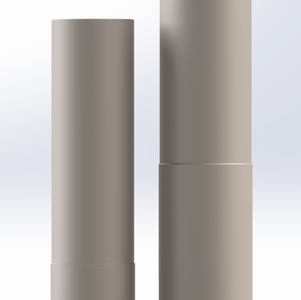Smart Silencers
The noise generated by a gunshot can be primarily attributed to three sources: the muzzle blast, which is the sound produced by the combustion gases and the fireball escaping from the barrel; the sonic boom, which is the shock wave created by the bullet traveling at supersonic speeds; and the mechanical action of the weapon's moving parts.
Let's begin with the mechanics of the firearm. Bolt-action rifles are quieter than semi-automatic or automatic weapons primarily because they have fewer moving parts during firing; only the trigger and firing pin are involved. In contrast, the mechanical action of a semi-automatic weapon generates noise levels typically around 100-115 dB.
The primary source of noise from a supersonic projectile is its velocity. While bullet caliber and ogival shape do influence the overall noise level, their impact is significantly less than that of velocity. A larger caliber blunt projectile will produce more noise than a smaller caliber sleek, slender and streamlined bullet. However, the differences in sound are nuanced, with velocity being the main contributor to bullet noise. The typical noise level for supersonic bullets ranging from .22 to .375 caliber is approximately 110-125 dB.
The noise generated by a muzzle fireball depends on several factors. The primary factors are the volume and power of the powder charge, followed by the length of the gun barrel. With the same caliber and powder charge, a shorter barrel will lead to higher pressure and temperature of the escaping powder gases, resulting in a larger fireball and increased noise. Additionally, the velocity of the escaping gases plays a crucial role in the noise level, as these gases travel at speeds significantly higher than the speed of sound, creating a shock wave similar to that of a projectile. The typical noise level for muzzle blasts ranges from 110 dB for a .22LR caliber sporting rifle to 165 dB for a typical .30-06 hunting round.
To achieve a quieter shot, while we cannot alter the projectile's velocity, we can opt for a bolt-action rifle. However, the primary focus should be on mitigating the main source of noise—the muzzle blast. This requires effectively reducing the pressure of the powder gases, cooling them down, and decreasing the velocity of the gases exiting the silencer to below the speed of sound.
This is the challenge we have successfully addressed in the design of our silencers: by incorporating the effect of gas dynamics hysteresis, we effectively dissipate the energy of the powder gases, reducing their velocity and temperature.
This results in a muzzle blast noise level that is lower than the noise generated by the shock wave of the projectile.
Our lightweight silencers are crafted from space-grade aluminum alloys and hardened, tempered steel. They vary in length, chamber design, and the number of chambers based on the caliber and cartridge used. For instance, we produce distinct silencers for calibers such as .223, .243, 6.5mm, 7mm, .30, 8mm, and 9.3mm. Additionally, our silencers for magnum calibers are specifically designed differently from those for non-magnum calibers. This variety is all about optimizing efficiency.
Our titanium silencer models are uncompromisingly crafted from premium titanium alloys, with every titanium component made to the highest standards. Each silencer is custom-made, considering the specific caliber, barrel length, and the barrel's outer geometry. The key advantages of titanium silencer over aluminum are its marginally lighter weight, more compact size, and, most crucially, an unlimited service life. This is because the titanium alloys we use are roughly twice as strong as rifle steel and significantly more corrosion-resistant than stainless steel. Since each titanium silencer is individually produced, we offer the option of personalized engravings for an additional fee, allowing you to own a beautiful and fully functional piece of art tailored to your preferences.


